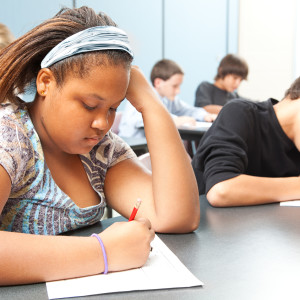On April 23, the Department of Education released the quadrennial National Assessment for Education Progress (NAEP) student test scores in civics and U.S. history.
The tests were given in 2018 to thousands of eighth graders. Only 24 percent of the students performed at or above the “proficient” level in civics and just 15 percent in U.S. history, an alarming finding given that informed citizenship is an essential lifetime job.
The quiz below, comprising past NAEP questions selected by the Ashbrook Center at Ashland University, provides an opportunity for you to test your knowledge of the facts and concepts covered in these tests.
1. The first permanent English settlement in North America was …
A. St. Augustine
B. Santa Fe
C. Jamestown
D. New Amsterdam
2. At the Constitutional Convention, there was a debate between large states and small states about representation in the new Congress. This debate was resolved by the Connecticut Compromise, which said …
A. the number of citizens in a state would determine how many seats that state had in Congress, but slaves and other noncitizens would not be counted for this purpose
B. Congress would have two houses in which the number of seats a state had in each house was based on its population
C. Congress would be made up of two houses in which all states had an equal number of representatives in each house
D. Congress would have two houses, one in which state representation was based on population and one in which all states had equal representation
3. Alexander Hamilton said that “we have neither troops, nor treasury, nor government” in part because the Articles of Confederation did not give the …
A. central government the power to protect the rights of slaveholders
B. central government the power to tax
C. states the power to make treaties with other countries
D. states the power to raise troops for war
4. What effect did the anti-Federalists have on the U.S. Constitution?
A. Their arguments helped lead to the adoption of the Bill of Rights.
B. Their arguments helped lead to the abolition of the slave trade.
C. Their influence ensured that the federal government would maintain a standing army.
D. Their influence ensured that the federal government would have the power to tax.
5. Gabriel Prosser, Denmark Vesey, Nat Turner, and Joseph Cinque were all …
A. soldiers in the American Revolution
B. merchants who were involved in the triangular trade
C. authors who described slave conditions
D. leaders of slave rebellions
6. Which group of Americans followed what has become known as the “Trail of Tears” when they were forced to leave their homes?
A. Japanese-Americans
B. Irish Americans
C. Cherokee Indians
D. Mormons
7. Susan B. Anthony was a leader of the movement to …
A. guarantee women the right to vote in national elections
B. guarantee former slaves the right to vote
C. ensure that harsher laws against criminals were passed
D. reduce the authority of the Constitution of the United States
8. The Monroe Doctrine, the Good Neighbor Policy, and the Alliance for Progress were all U.S. foreign policy positions relating directly to …
A. Latin America
B. Africa
C. Middle East
D. China
9. In October 1962 the U.S. and the Soviet Union came close to war over the issue of Soviet …
A. control of East Berlin
B. missiles in Cuba
C. support of the Ho Chi Minh regime in Vietnam
D. military support of the Marxist regime in Afghanistan
10. The number of electoral votes each state is allotted is based on the state’s …
A. size
B. average income
C. representation in Congress
D. number of years as a state
Answers: 1-C, 2-D, 3-B, 4-A, 5-D, 6-C, 7-A, 8-A, 9-B, 10-C

